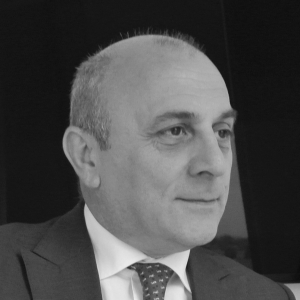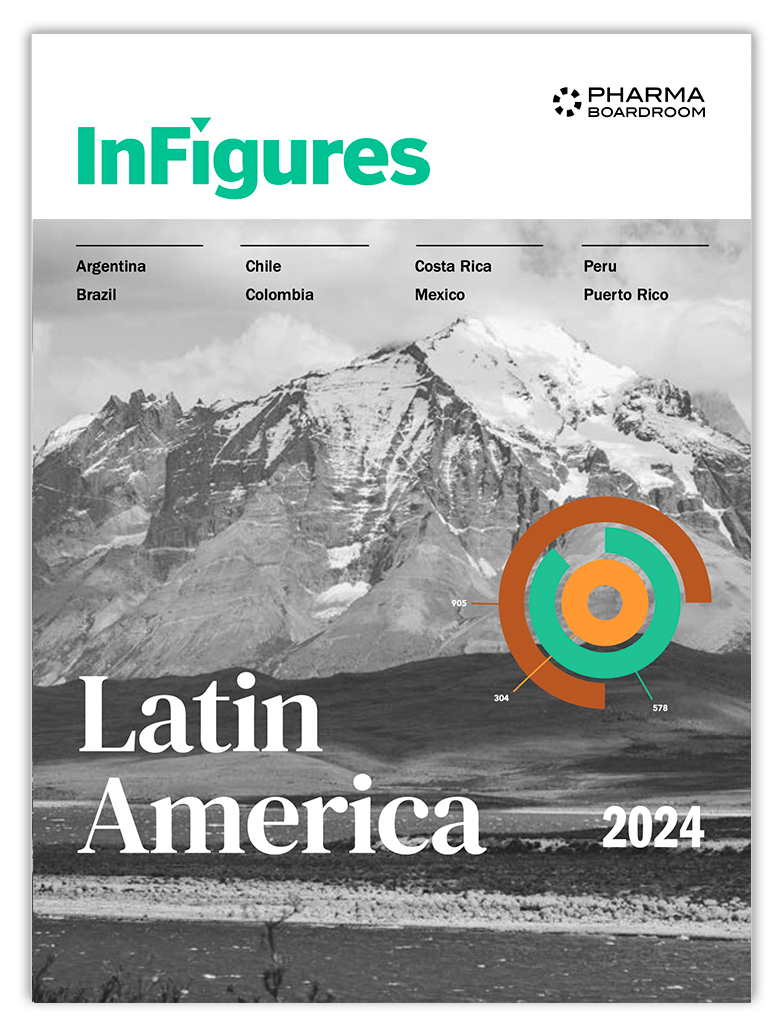Dr. Ermano Buratti, General Manager for Astellas Pharma in Italy, discusses the company’s evolution as it enters its second decade, the importance of partnering with the government on reimbursement, the current state and need for change in the country’s healthcare system, and his efforts to put Astellas in a position for growth in 2016.
Ten years ago, at the creation of Astellas, the company set up its Vision 2015 objectives with the aim to expand its Rx business and find new opportunities in its markets. We are now at the end of 2015; how would you rate the company’s success?
I would say we have been very successful. We set up our 2015 vision back in 2006, and at that time its main pillars were to obtain global category leadership, and to successfully merge two billion-dollar companies in Europe. We achieved these objectives in 2014, which was a major milestone for us and solidified our position as a serious player in the market. We also increased our strengths in our therapeutic areas, in particular in urology, transplantation and oncology. Oncology is actually becoming the most important area for us moving forward, and the vision for 2025 is to move past the aim of global category leadership into new areas. As a result, we are currently evaluating promising new therapeutic areas outside of our traditional four sectors in order to truly become a global and diversified company, open to all therapeutic possibilities in order to better serve our patients.
What is the role of the Italian affiliate in achieving this global vision?
Our role as an affiliate primarily concerns growth. Currently the size of the Italian affiliate is smaller than what might be expected given the potential of our market. We have the fourth-largest market in Europe, and yet we are the sixth-largest affiliate. My personal target in this light, is to grow the affiliate to become at least the fifth-largest for Astellas in Europe, and this will be aided to a large extent by the launch new products, and in particular Xtandi in oncology which is showing significant promise.
This situation must be assessed however while keeping in mind that our system in Italy does not, in many respects, afford us the same possibilities other European affiliates have. For example, two of our most important products concerning functional urology, which are reimbursed in Europe’s other main countries, are not reimbursed in Italy. This immediately puts us on a different scale in terms of possibilities for growth. Despite this however, we have made significant headway this year, and will surpass 100 million euros in sales at the end of 2015, marking a major milestone for our team.
A wider approval for Xandi will make the difference here, it is already partially approved and reimbursed, but approval for a wider use of the drug will make it a true blockbuster for Astellas, and give us the momentum we need to grow quickly in the market.
The company has a significant number of major projects in phase three. You mentioned oncology, but where else do you see your future growth drivers emerging?
Oncology will certainly be one of our most important therapeutic areas. However, as an example of our efforts elsewhere, we also recently acquired Ocata, which is a company specialized in non-traditional approaches to ophthalmology. Together we are working on degenerative therapies, and in the process we are developing a new vision on the therapeutic approach to different pathologies. This means that for Astellas, Ocata not only represents a company where we can find new therapeutic areas to explore, but it also represents a new way of approaching the therapeutic aspect of different pathologies.
What are you personally most excited about when looking at the Italian affiliate today?
I think that in terms of the contributions Italy brings to the group, this country can be considered at the forefront of developing new approaches to pricing and reimbursement.
Here in Italy, due to the regionalized healthcare system, we have had to develop very different methods of managing the pricing and reimbursement processes for the approval of new drugs. However, I believe that in the future, these processes which the country has developed will be adopted on a more global scale. So despite the fact that we, as an affiliate, are suffering right now due to not being able to obtain the best price for our products, our experience with the system in Italy can make our group aware, at a global level, of possible future approaches to pricing and reimbursement.
For example, I had never previously heard of a pay-by-use system for the reimbursement of a drug. Price-by-use is a different approach to reimbursement based on the fact that the therapy or molecule used to treat different pathologies can have a different price over different periods. The system will then initially reimburse you at a price which can cover your development costs, and subsequently at a lower price to cover your production costs. This means fluctuating prices for the same drug depending on the number of applications that drug has and the length of time it has been on the market. I think price-by-use represents the future for reimbursement systems, and as the Italian affiliate we are on the front line of developing negotiation strategies to deal with this.
Astellas, wherever possible, tries to position itself as a partner to government in the countries in which it operates. However, in light of the pricing pressure AIFA is under, has it been possible to do the same in Italy?
Yes, we are working to not only become a partner to different public institutions regarding negotiations, but to also collaborate with them for the final development of the drug, in particular when it comes to showing the cost-benefit analysis of our medications, or setting up the pharmacoeconomics process. For this we need to go to the payers and decision-makers and tell them, two- to three years before the drug is launched, that we have a drug in our pipeline with certain features and a certain potential cost. Then they have to decide whether or not the country needs such a drug, what the potential obstacles might be to its release and what will need to happen before they can approve the drug.
These discussions are only possible if you position yourself as a partner to the government and the stakeholders involved, and view the issue from their point of view as well. In this way we can not only save the company a lot of time and money, but likewise the payers benefit from a streamlined approval process as well.
To truly improve this approval and reimbursement process however the regions need to be involved in a more meaningful way during our discussions with the national authorities, as they will be paying part of the reimbursement as well. The state needs to understand the regional disparities in terms of wealth and resources, and take these into account when developing its pricing solutions. That way we can have a meaningful discussion centrally, and avoid having to renegotiate reimbursement in every region.
We have heard many different views on the current system, but some have said that when companies offer truly innovative drugs, it is still possible to get a fair price. Do you agree?
Right now, the focus of the authorities is certainly on finding a way to cover the most innovative drugs. The risk here is that the pharmaceutical companies will be called upon to help pay for these drugs themselves. To be honest I believe that this discussion needs to be extended to involve all stakeholders, including the companies, the institutions, the patients, and the regions. Of the national healthcare fund, which today stands at 107 billion Euros, fifteen percent is made up by pharmaceuticals. This means that there are undoubtedly inefficiencies beyond the pharmaceutical sector which need to be addressed, thereby freeing up funds. Finally, we need to develop a system which clearly identifies savings made by innovative drugs elsewhere in the system so that these can be passed on to the pharmaceutical sector in order to fund those innovative drugs.
With the rise in the importance of patient groups to the global industry, how do you view the influence they have on both the government and companies in Italy?
We are working with patient associations in Italy, however currently their weight in the negotiation process and influence on the government is not yet what it perhaps should be considering their position as primary stakeholders. I would say that their power in Italy is not yet at the level you can witness in certain other European countries such as the UK, and far from what it is in the US where they have a large influence.
I think that the culture is evolving in this direction however, and that they are gaining an increasing sway over the government’s decision-making process. They will also inevitably gain a stronger influence over companies as they are central to pharmaceutical companies’ philosophy. It is possible that in the future this puts pressure on us to accept lower prices if the government cannot afford a certain drug.
The relationship between the three main stakeholders in the industry, the payers, the patients and the companies, is changing and indeed needs to change in order to involve each party in terms of market access, reimbursement and planning for a sustainable healthcare system.
An important point in the philosophy of Astellas is that it seeks to engage patients directly and to educate them on pathologies related to therapeutic areas of interest. How do you work with patients in Italy?
We are very active in the transplantation area especially, for example a few days ago we launched a campaign in which we work directly with patients in order to explain how taking their drug in the correct dosage at the right times and in the right way can avoid negative consequences. This acts to prevent the state from costly operations stemming from complications in the treatment, but more importantly it can save the lives of patients directly. This campaign is conducted in collaboration with the patient associations as well as representatives from the transplantation physicians’ association.
Clearly there are many possibilities for Astellas in Italy, how are you going to capitalize on these?
Through the use of our excellent negotiation skills and the proven ability to improve our market share. It will be important for us to maintain our results over the long-term in the face of new challenges posed by generics. We can achieve this by being resilient, and open to new ideas. I embrace change, because I think that this allows us to grow and adapt ourselves to the new dynamics of the market. Change does not mean following the trends, but to anticipate and adapt to emerging threats and opportunities before they become widely apparent. When I joined this position five years ago, I immediately started implementing this philosophy in the form of structural changes to the organization, in order to give our products the right environment to grow. I think today it is time to re-examine our position again, as the market’s needs continue to evolve.







